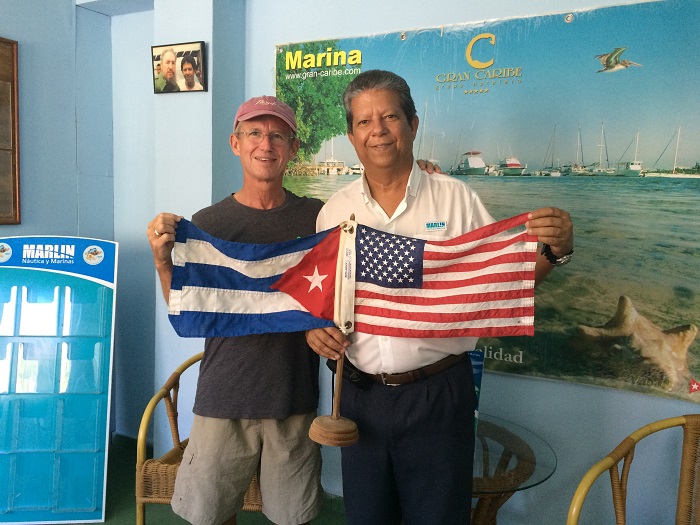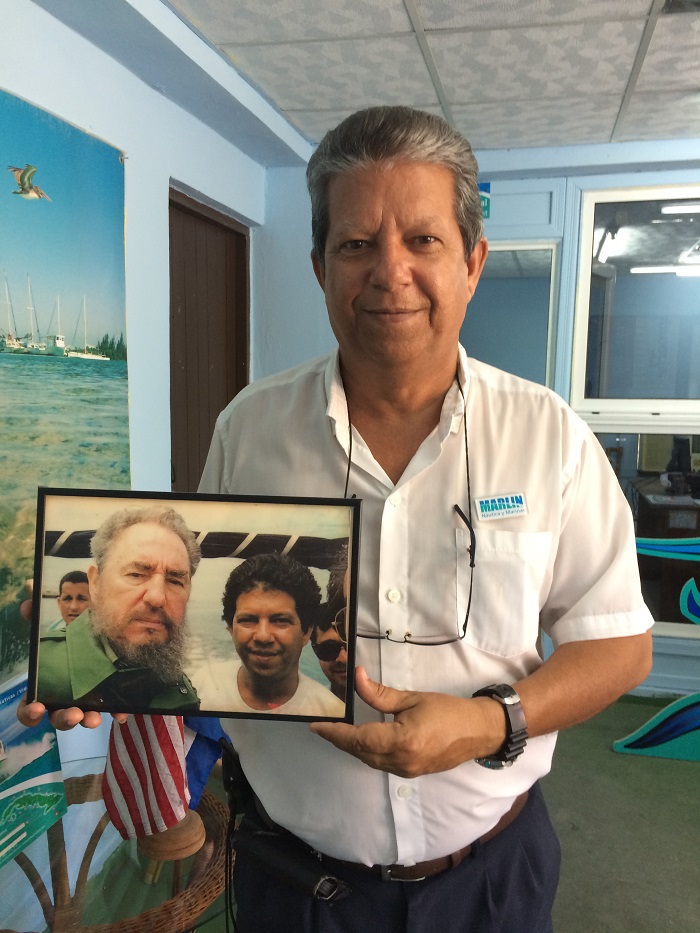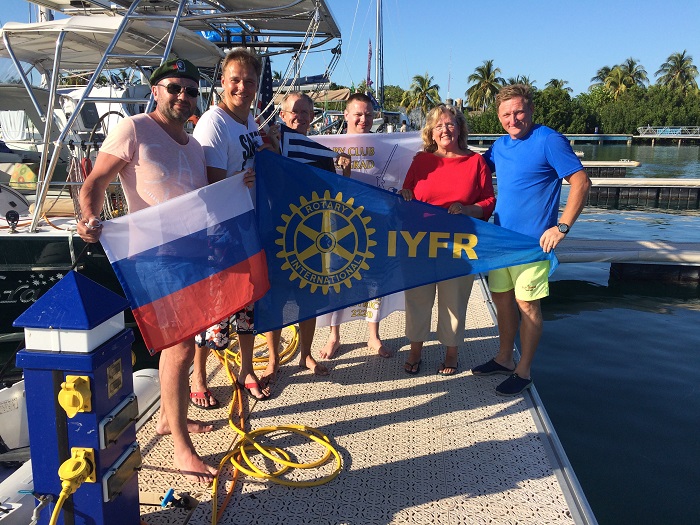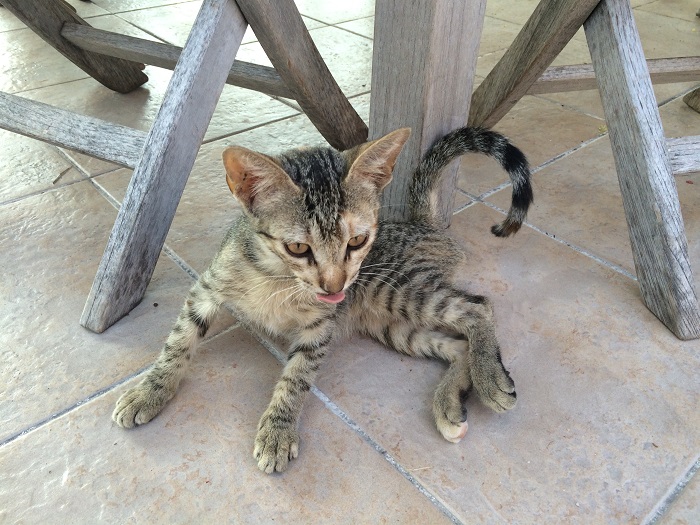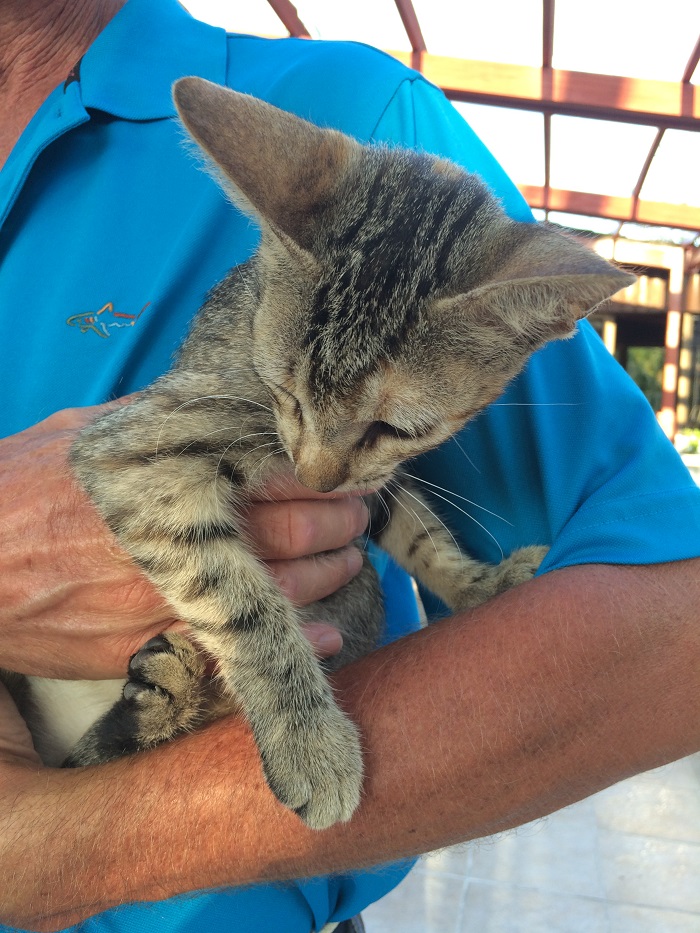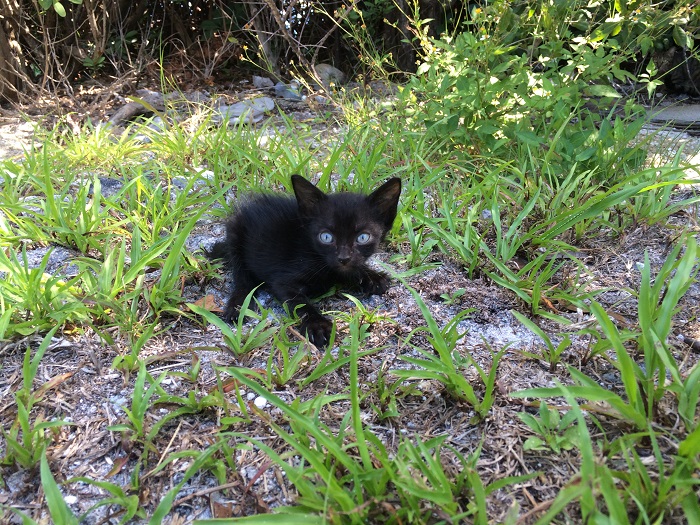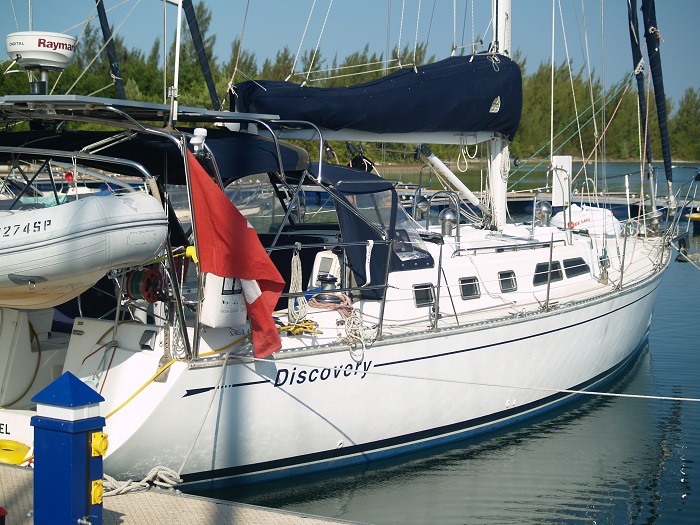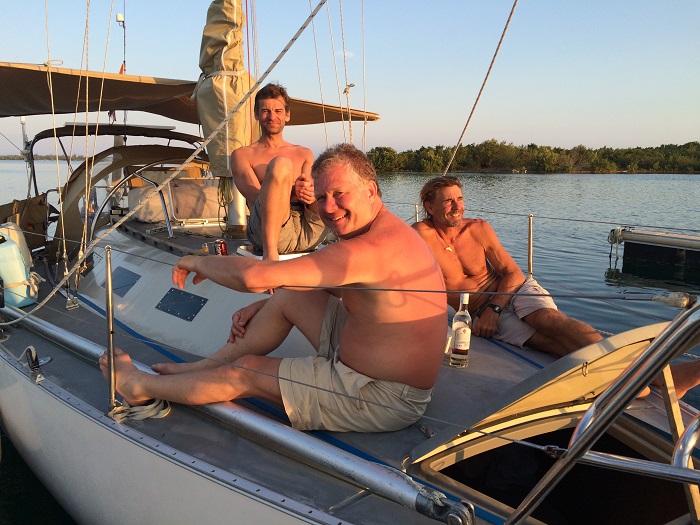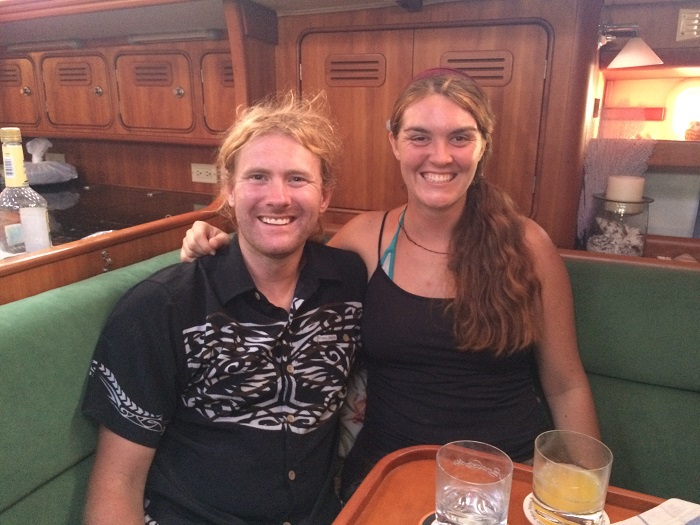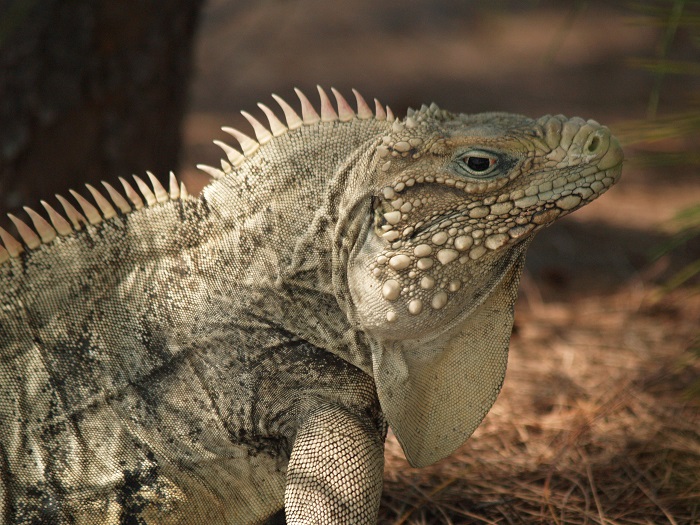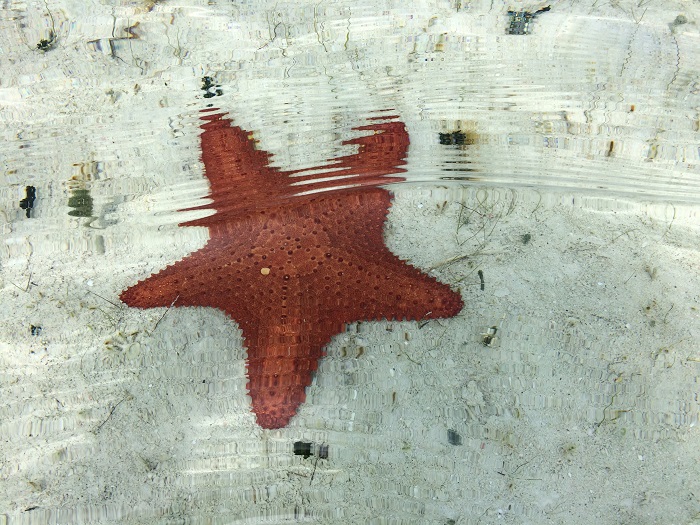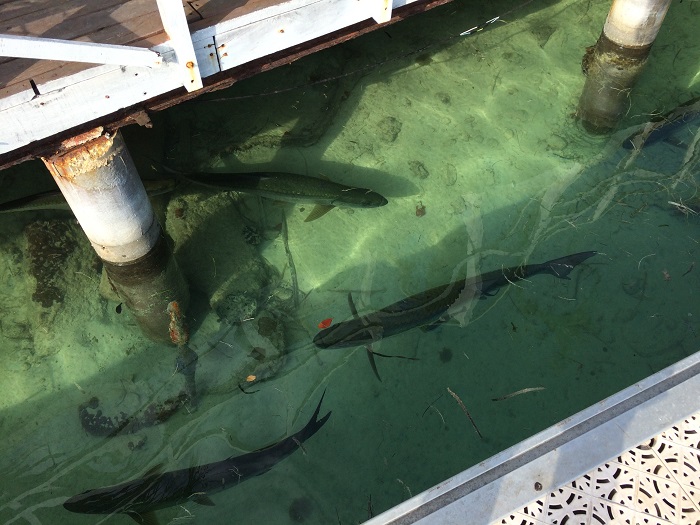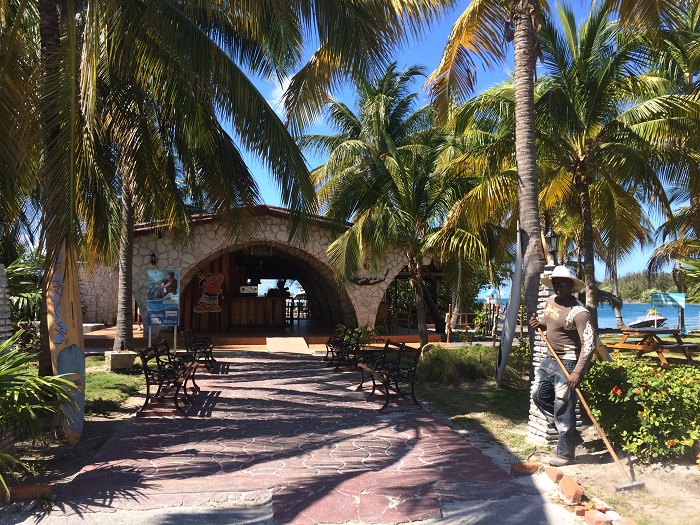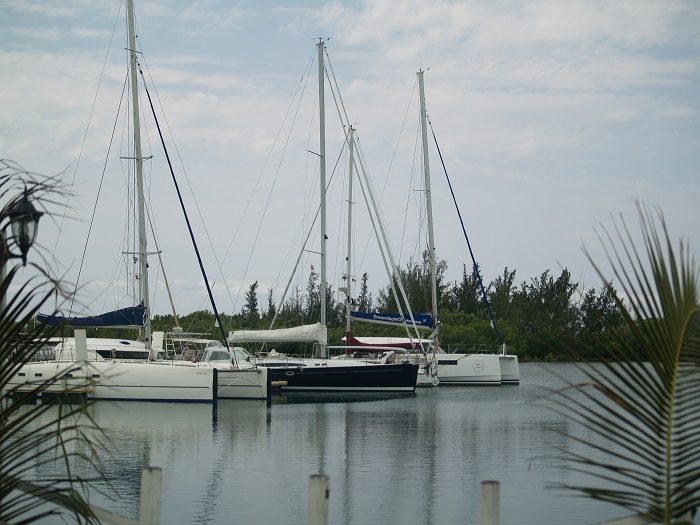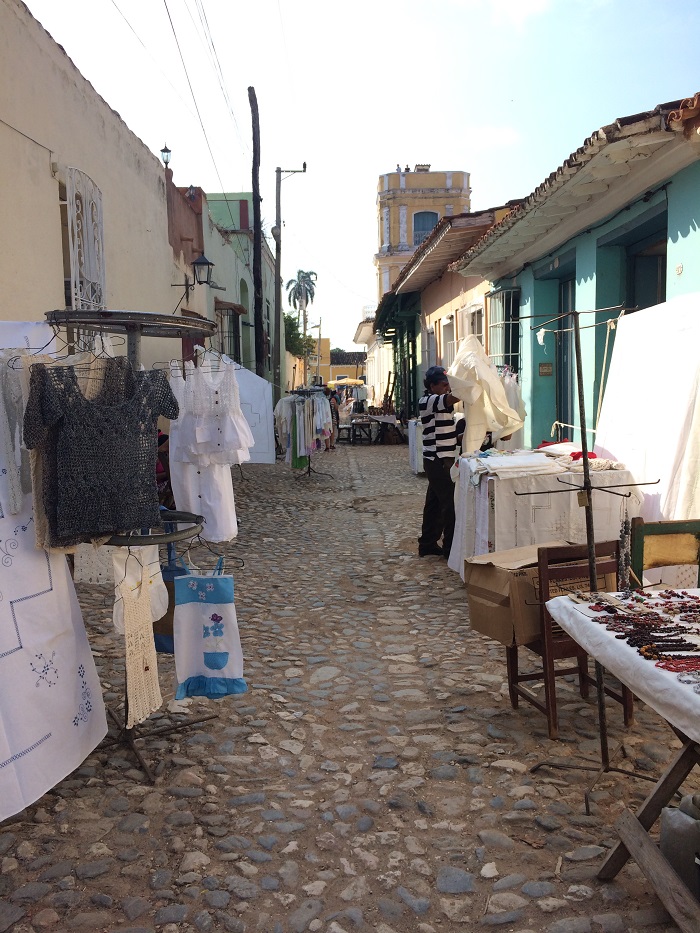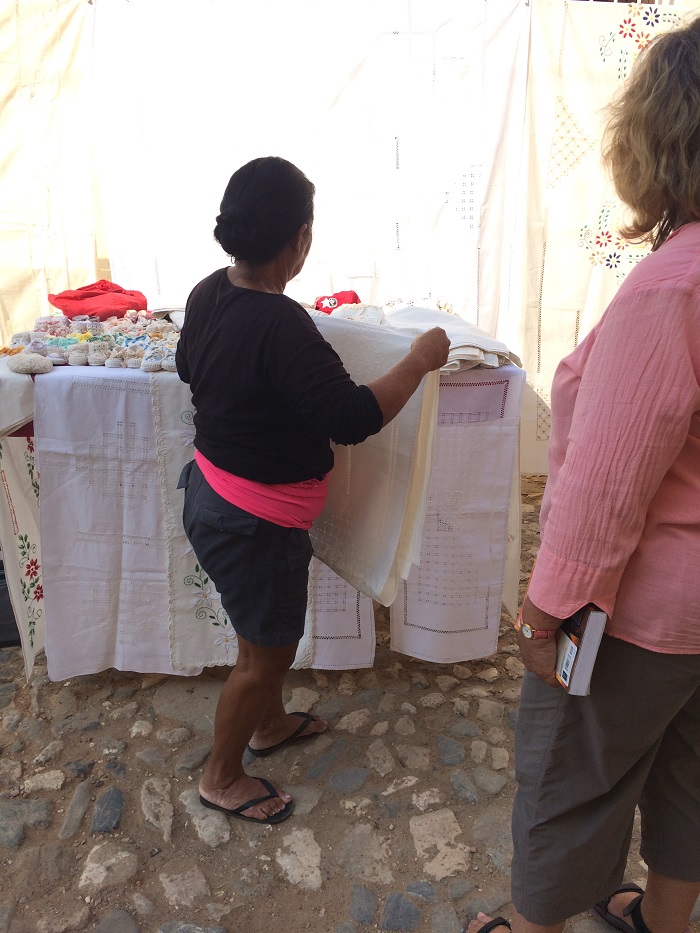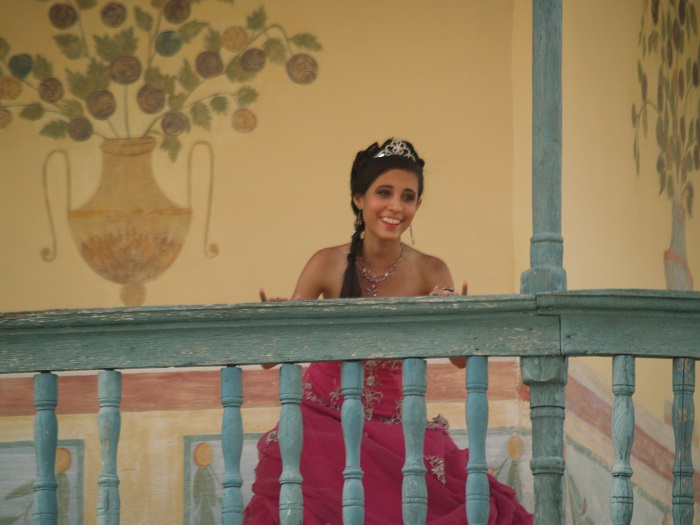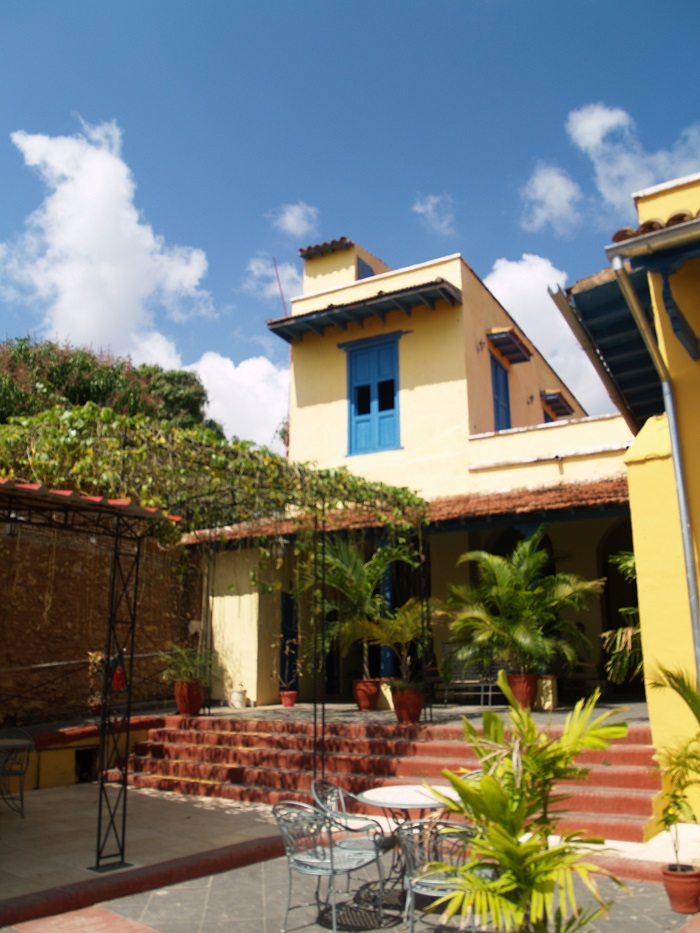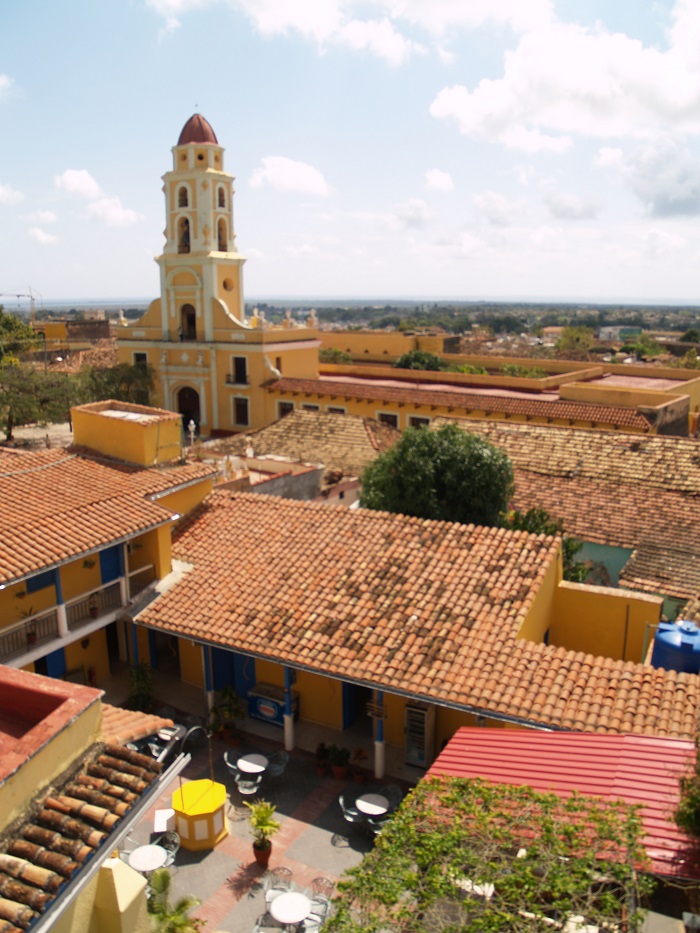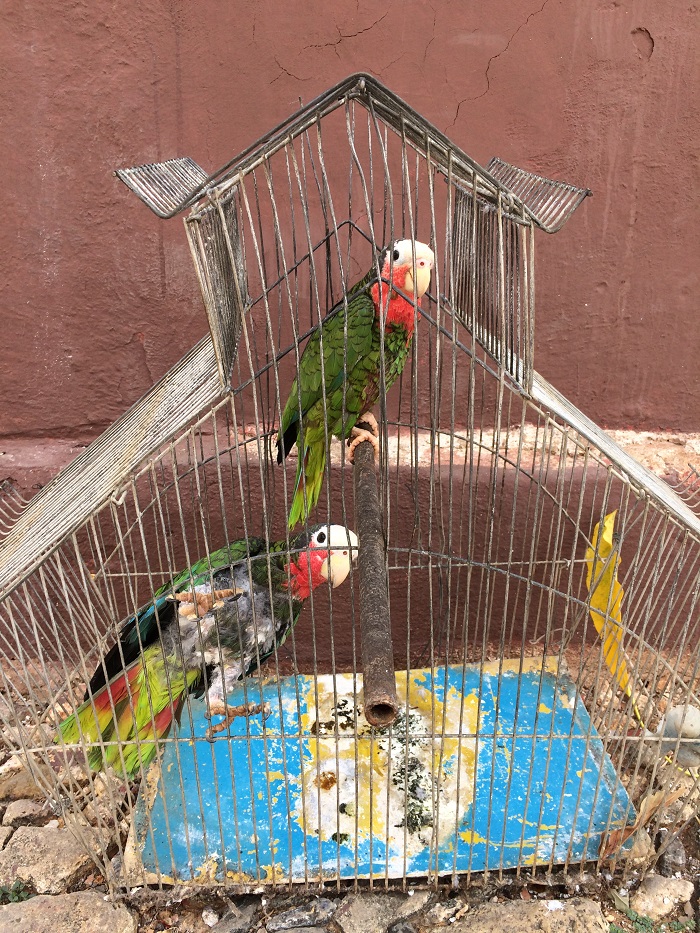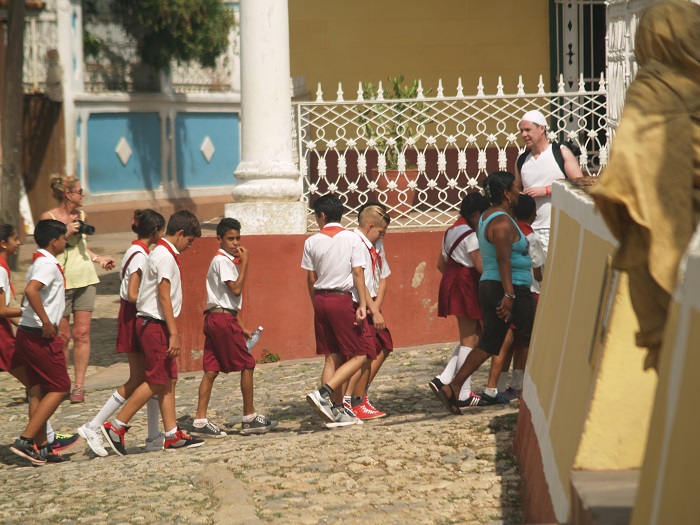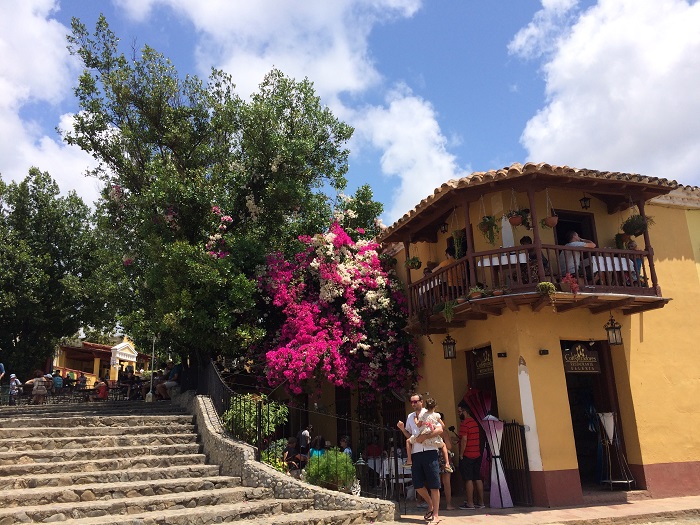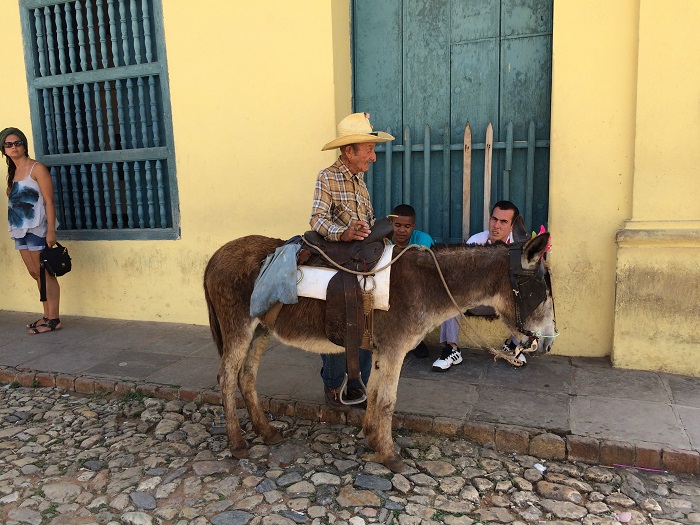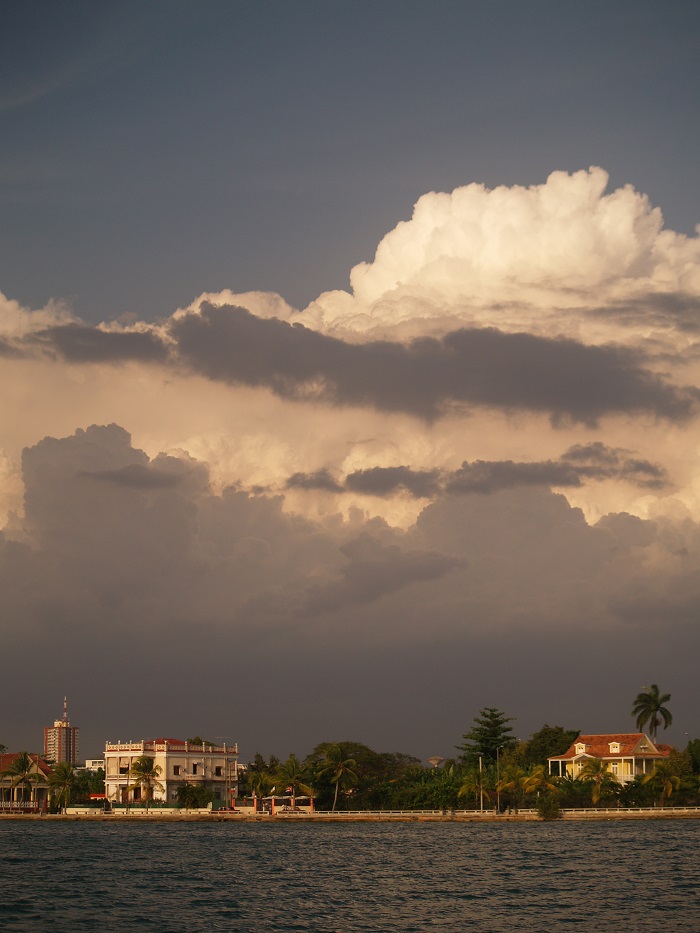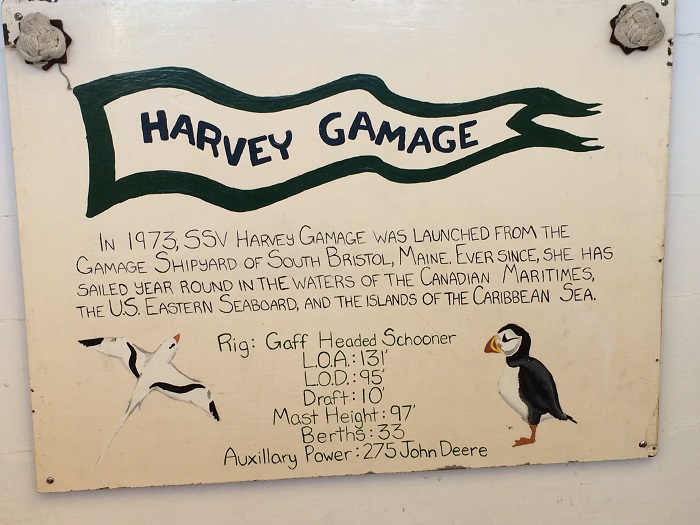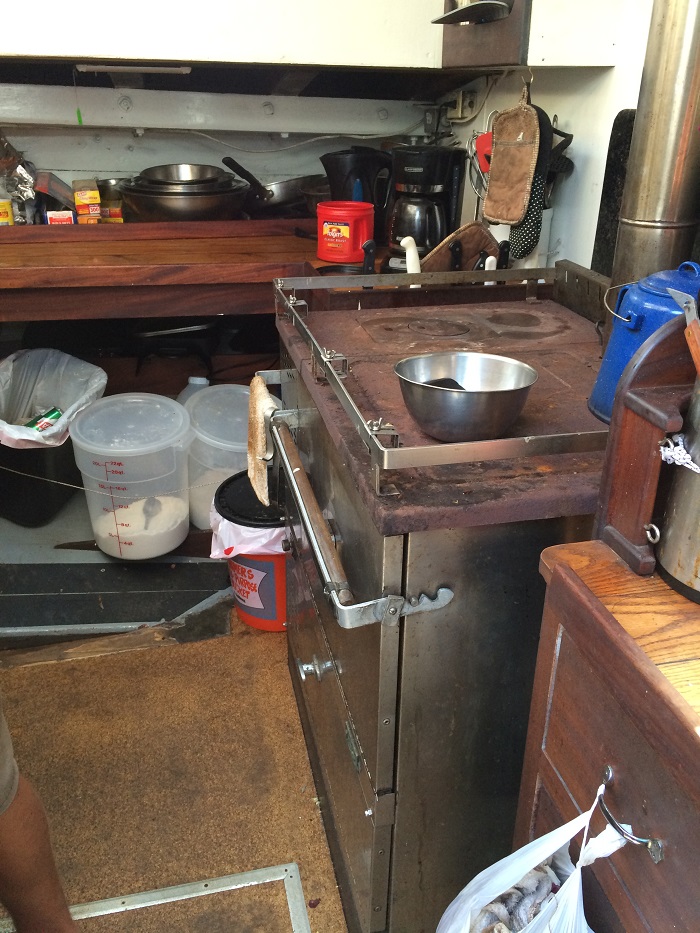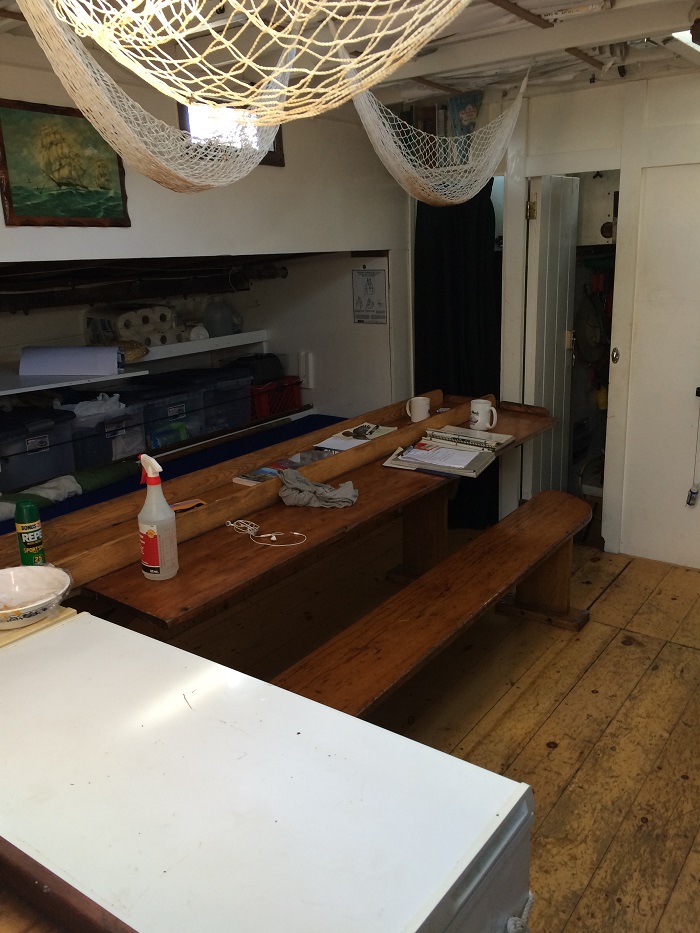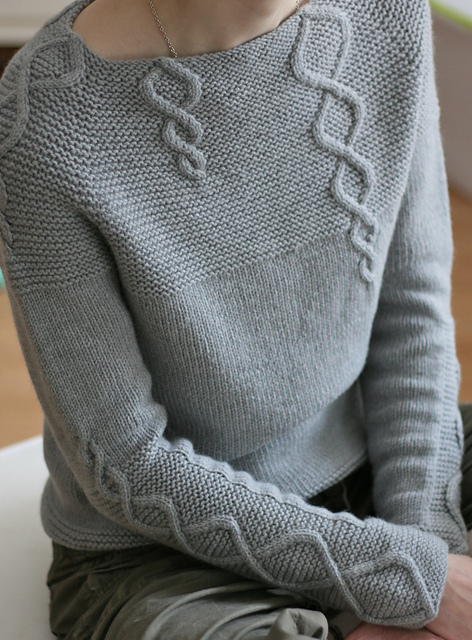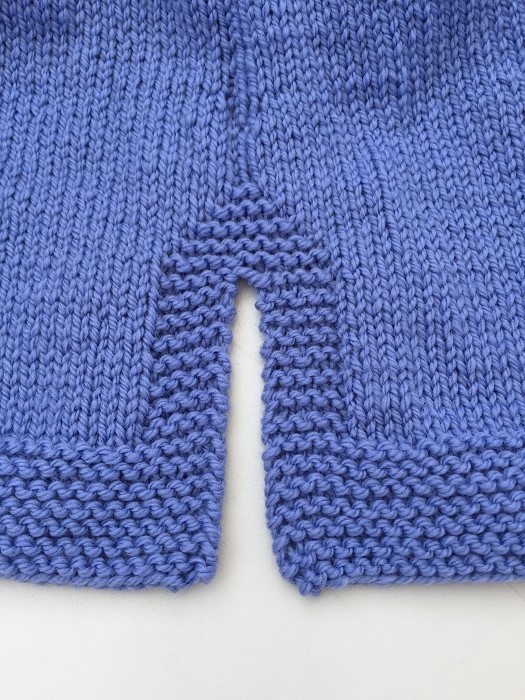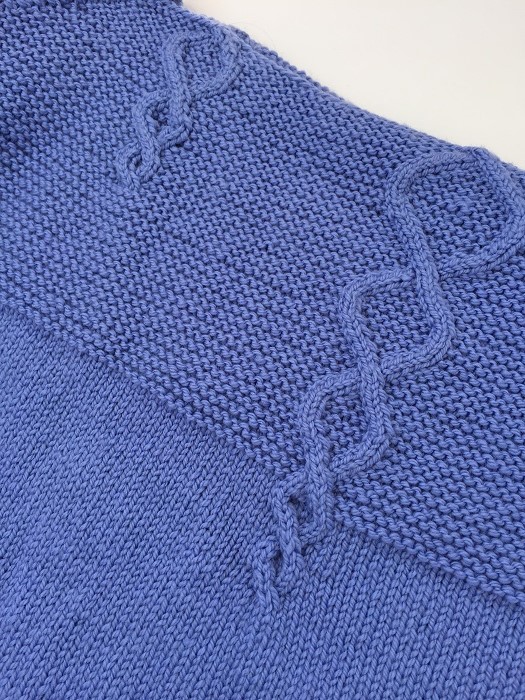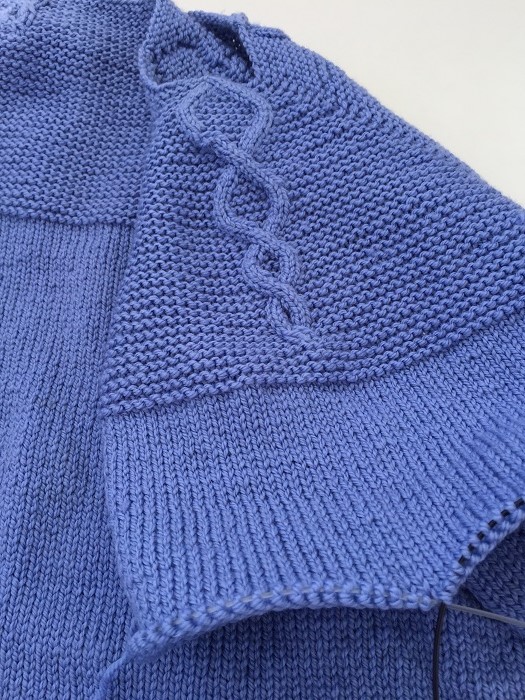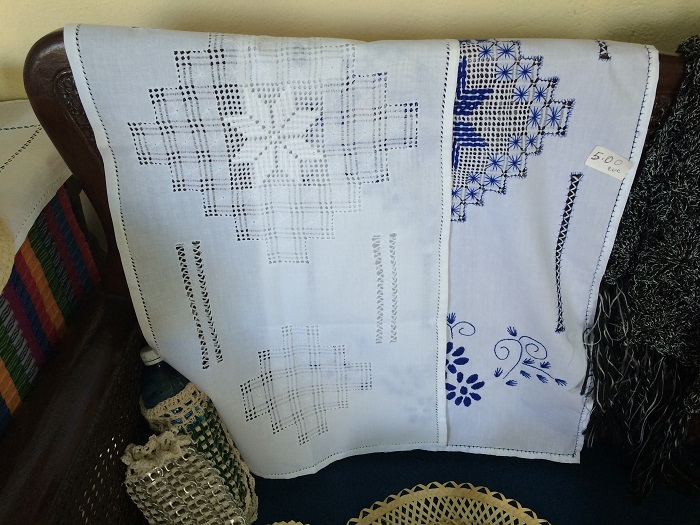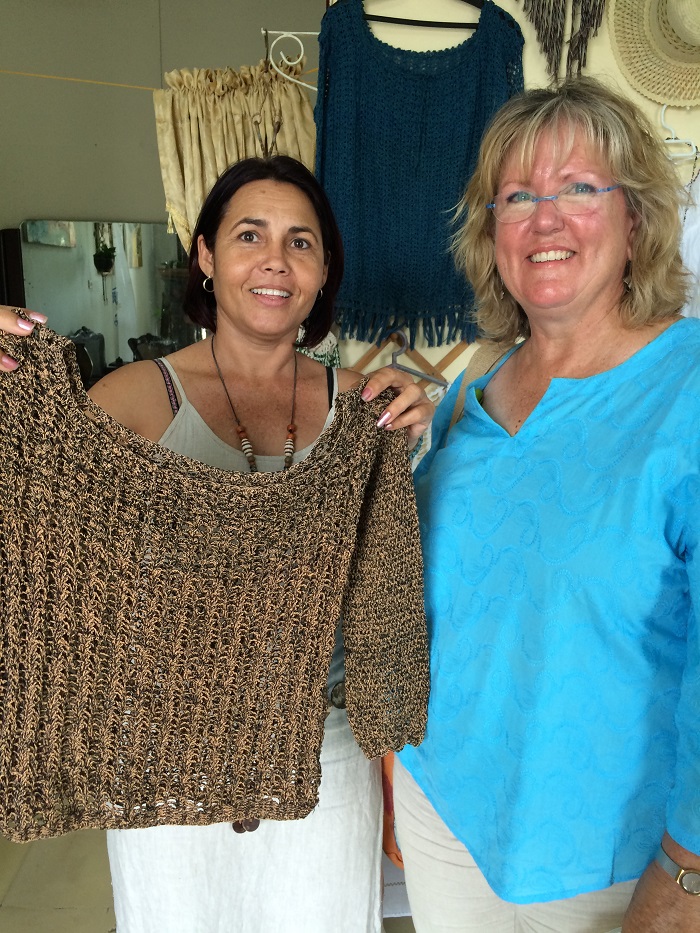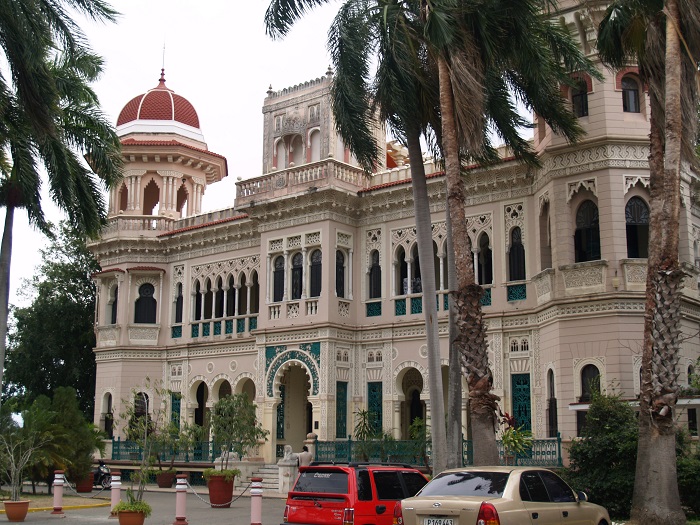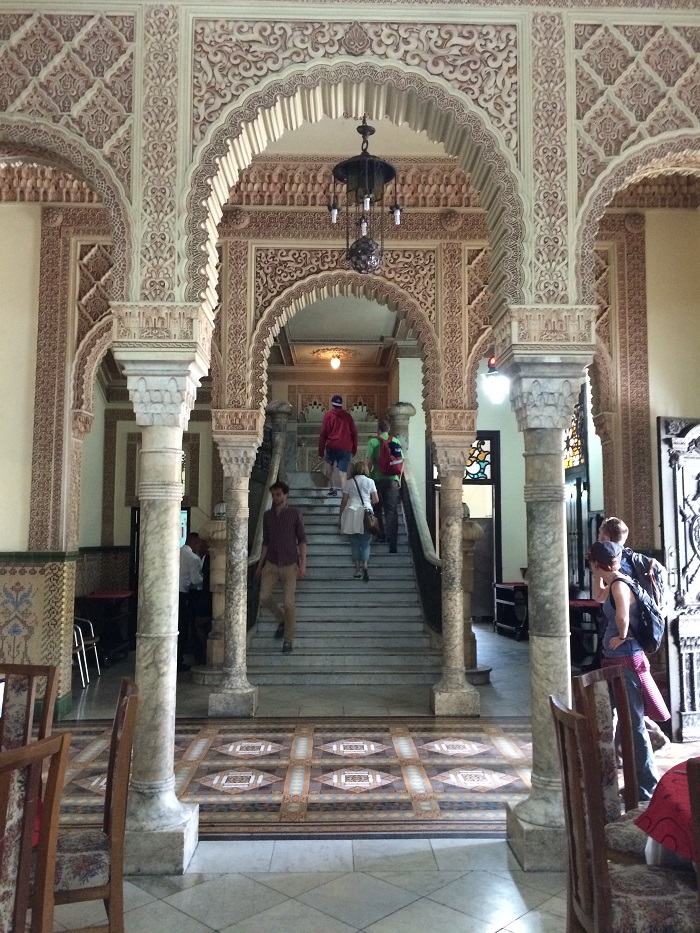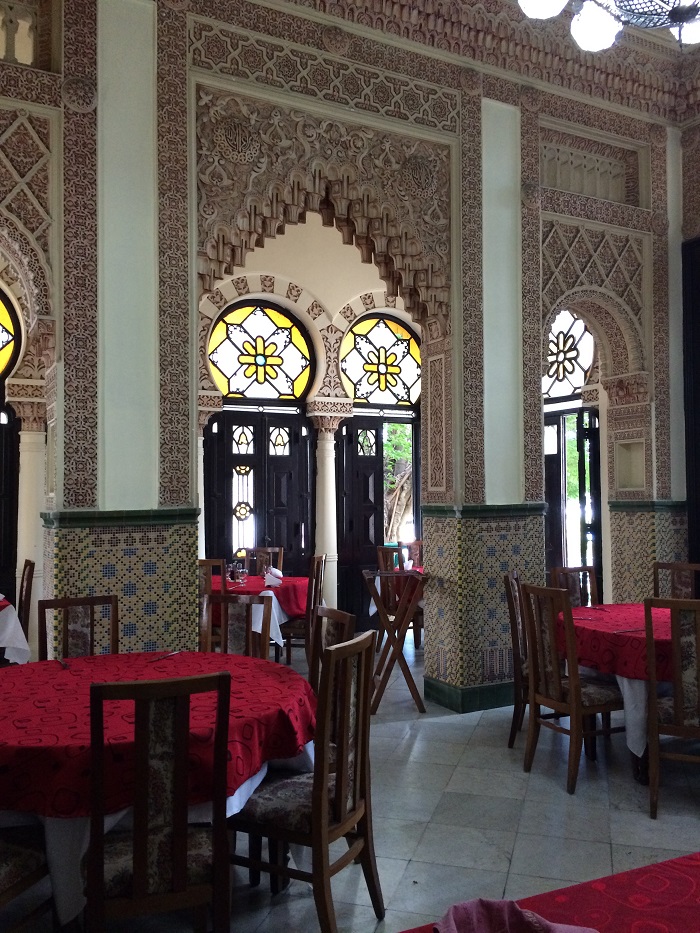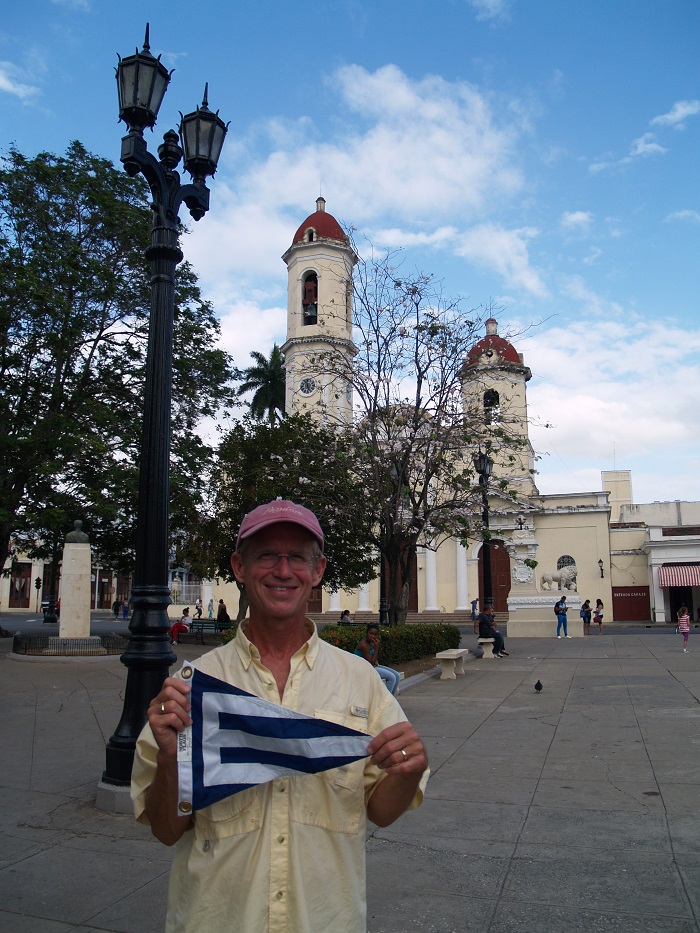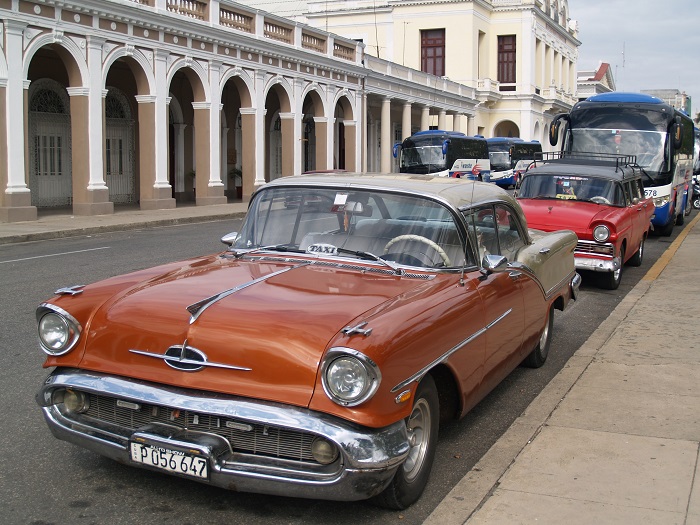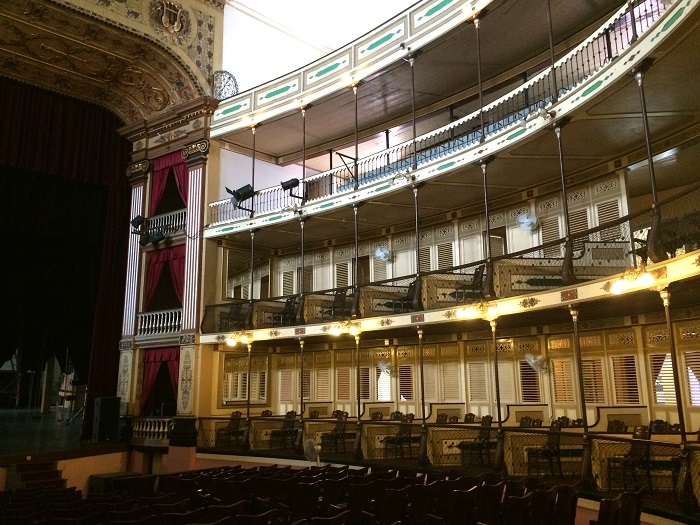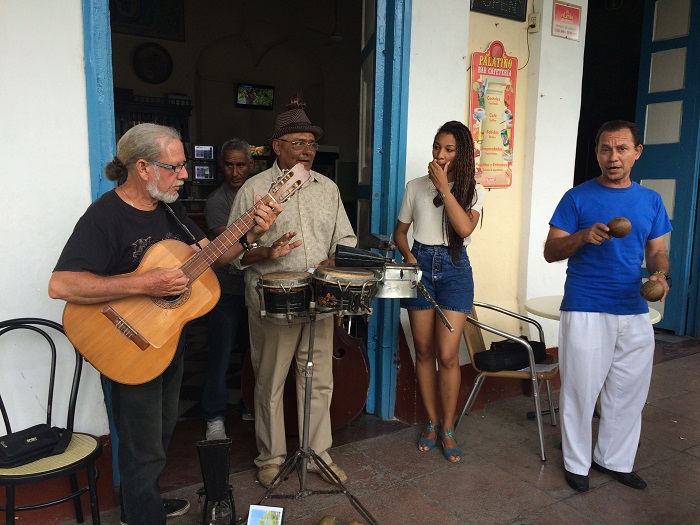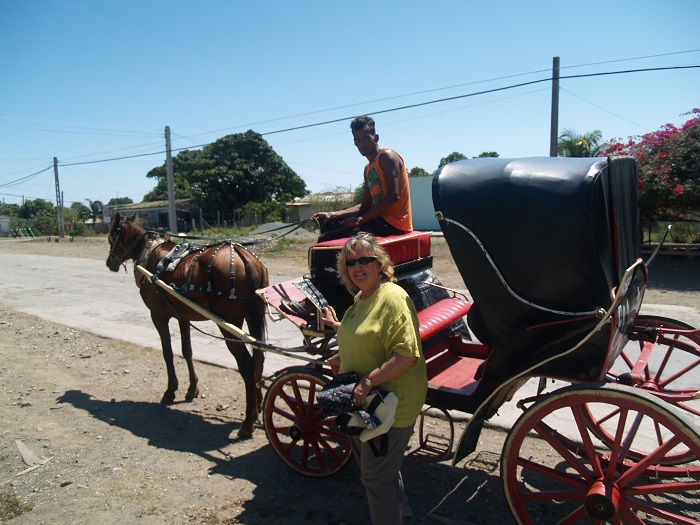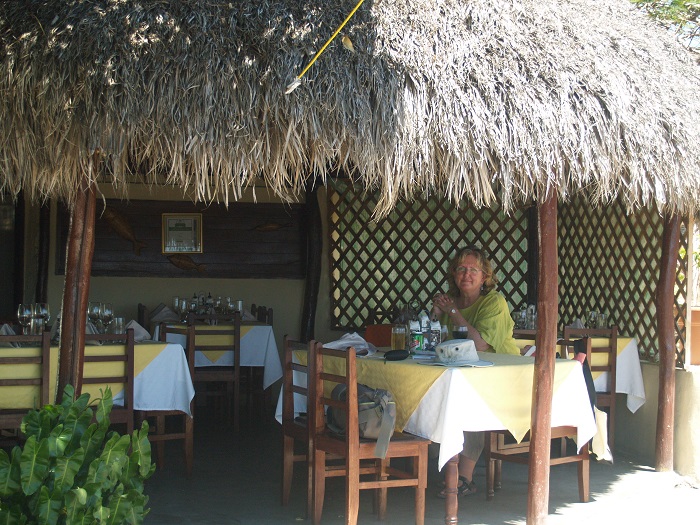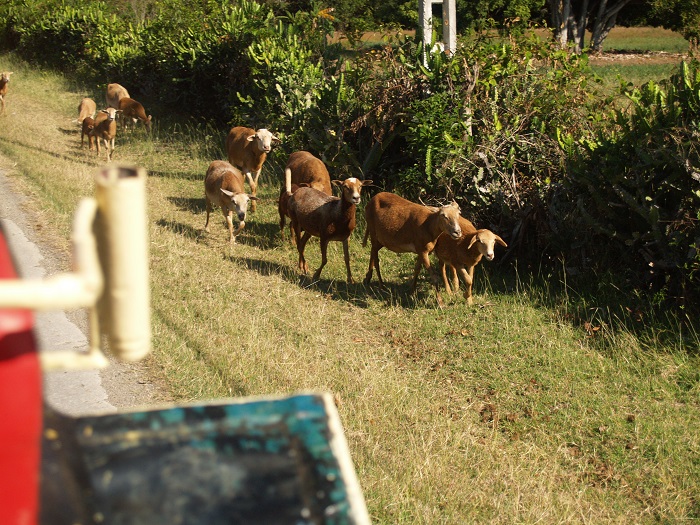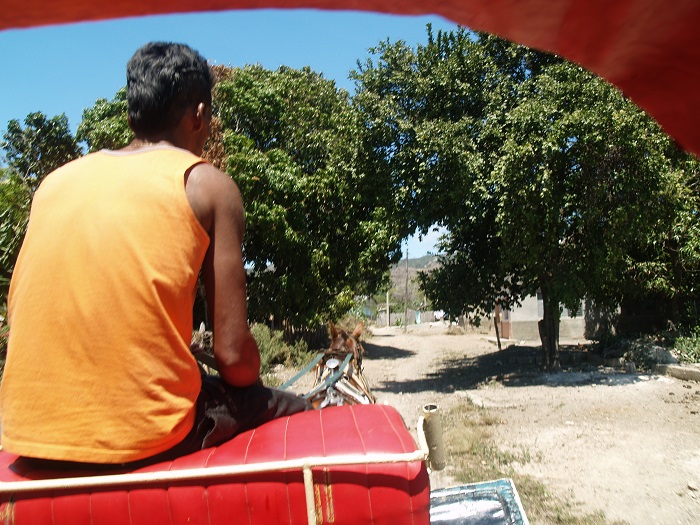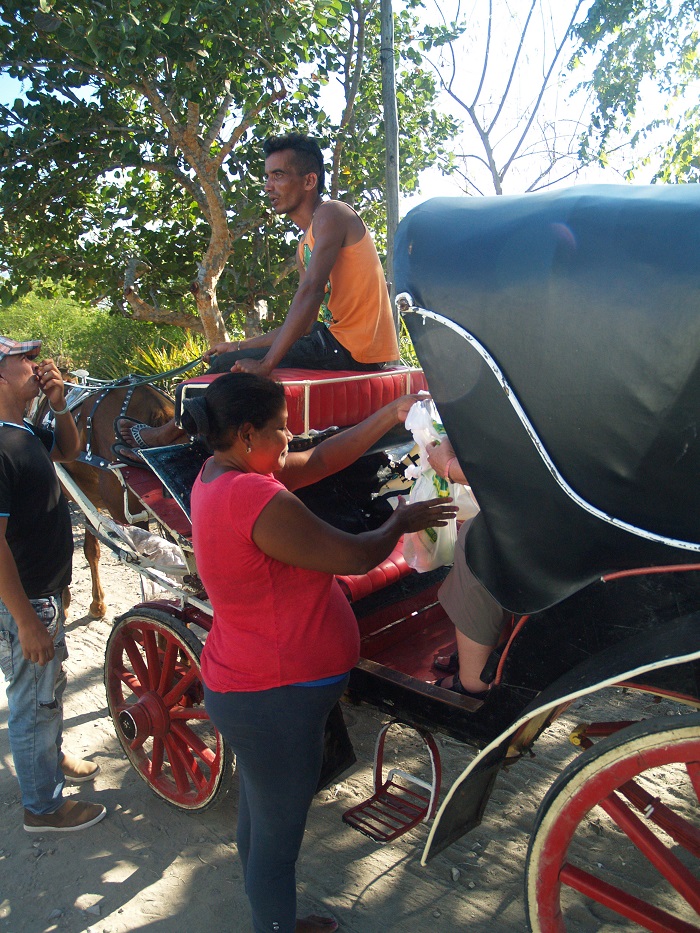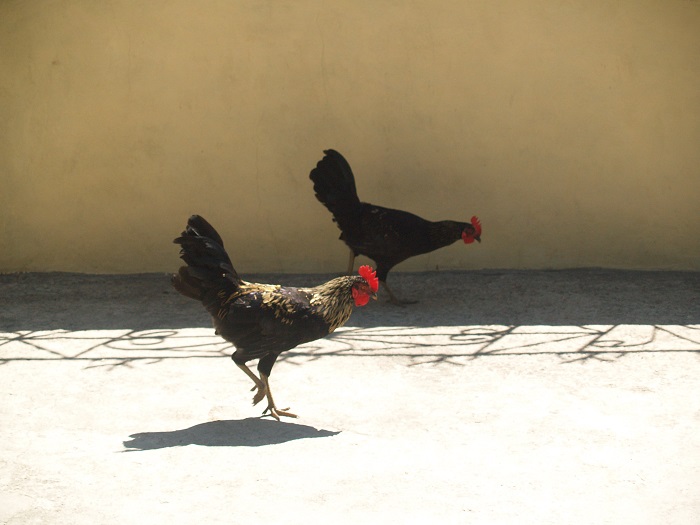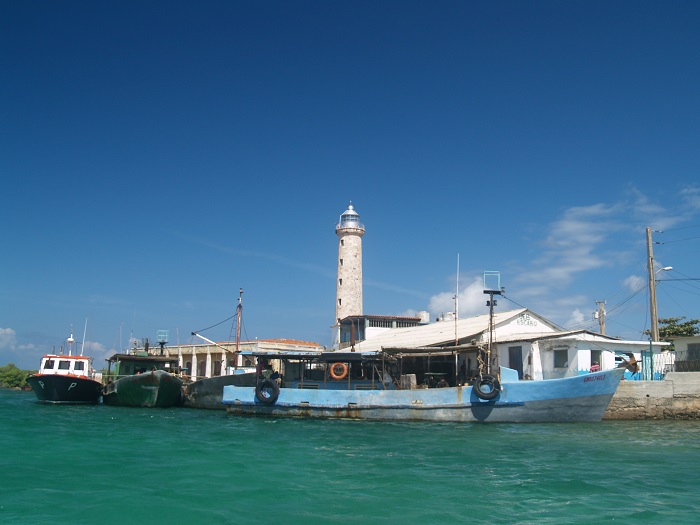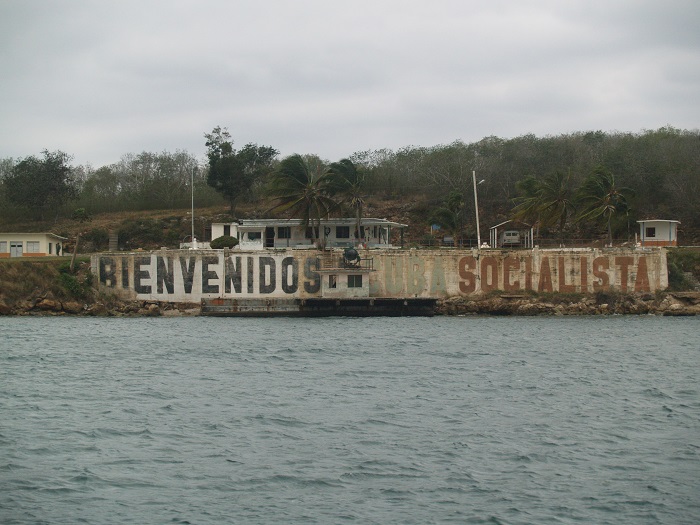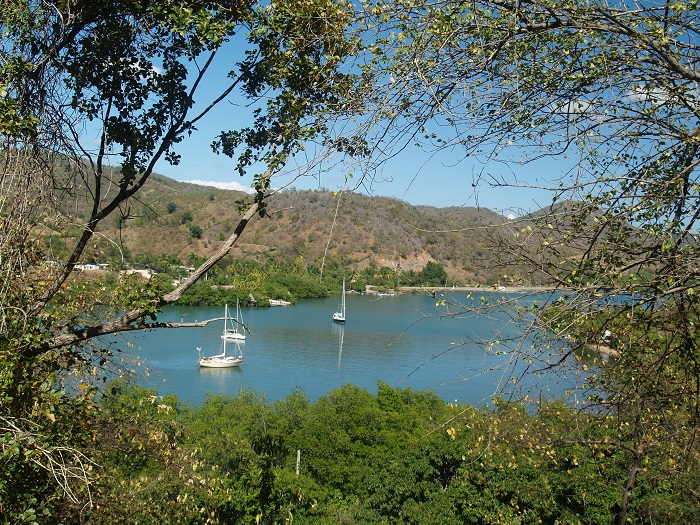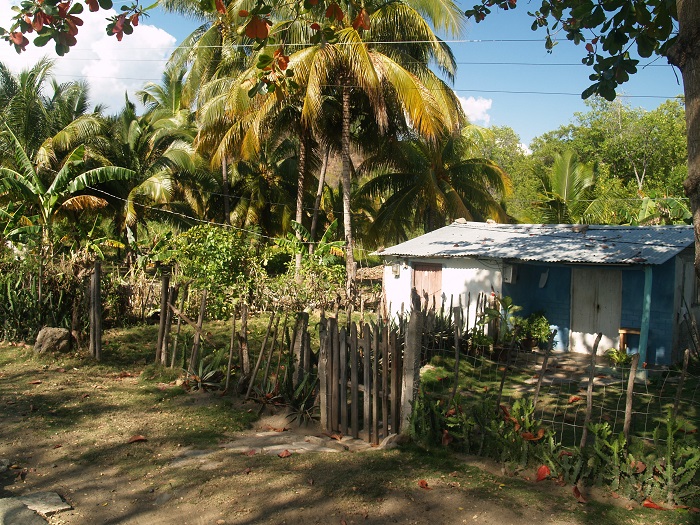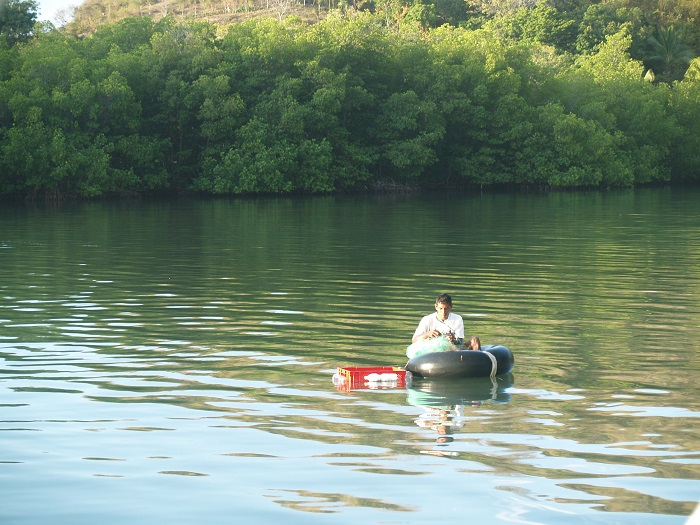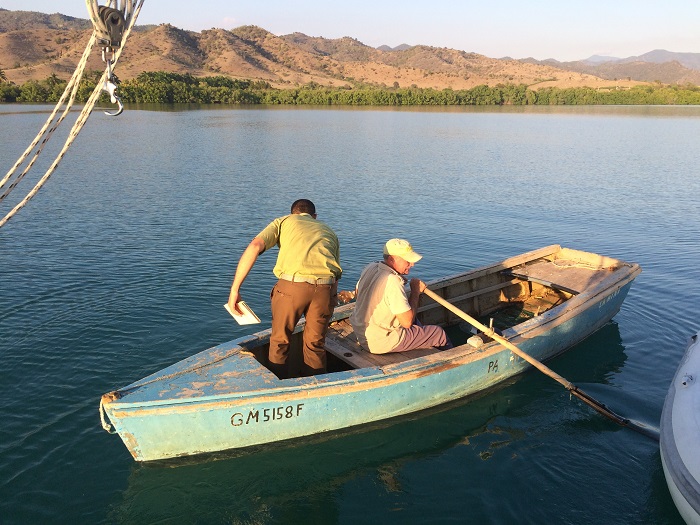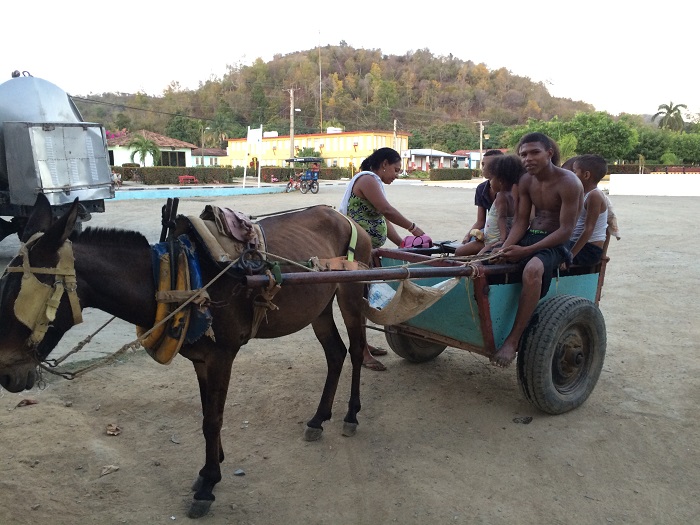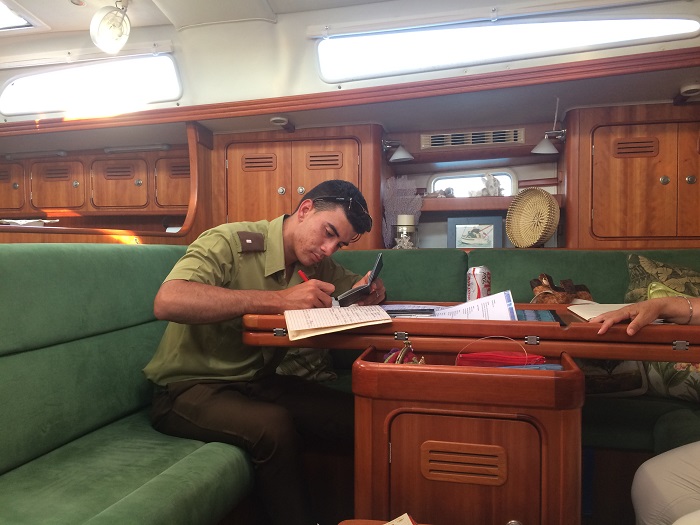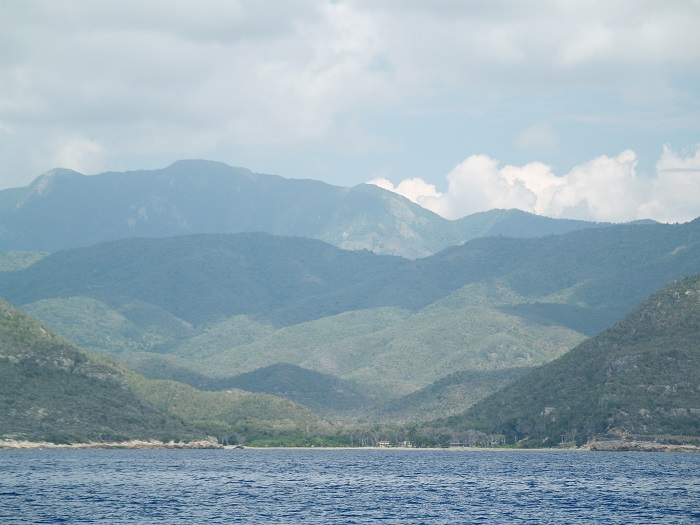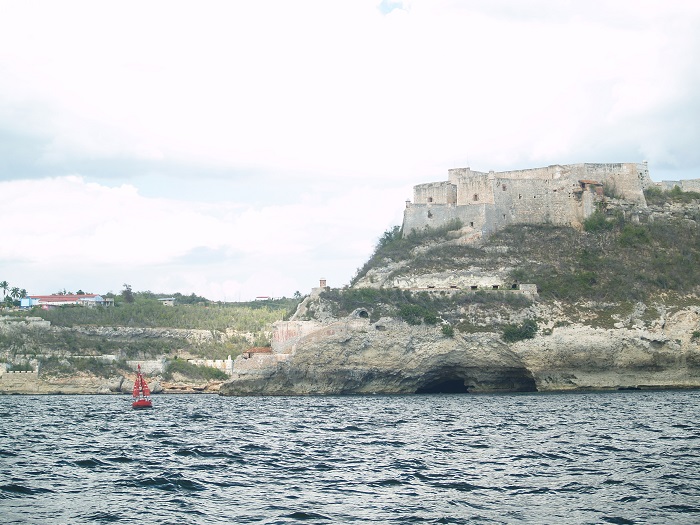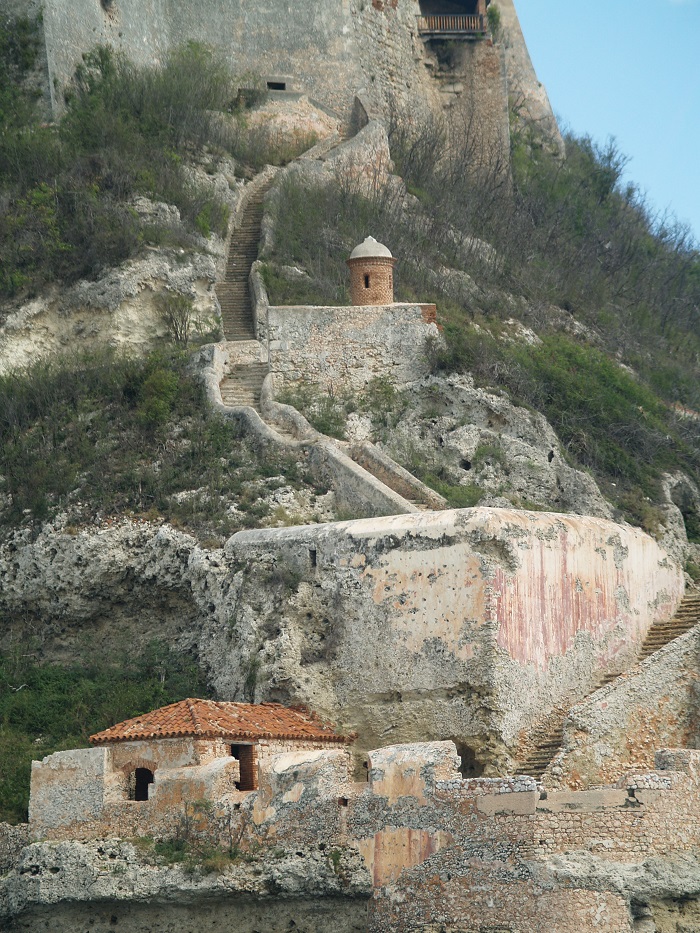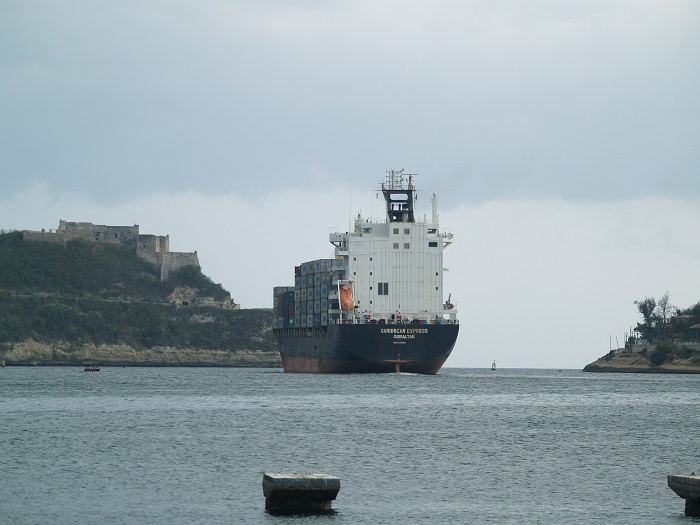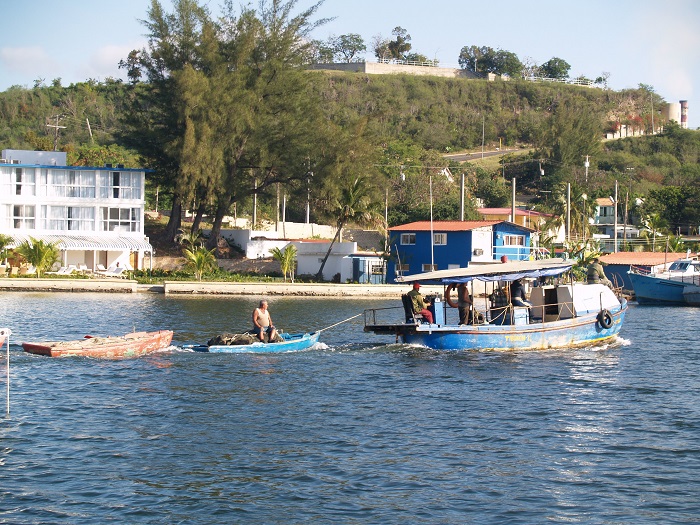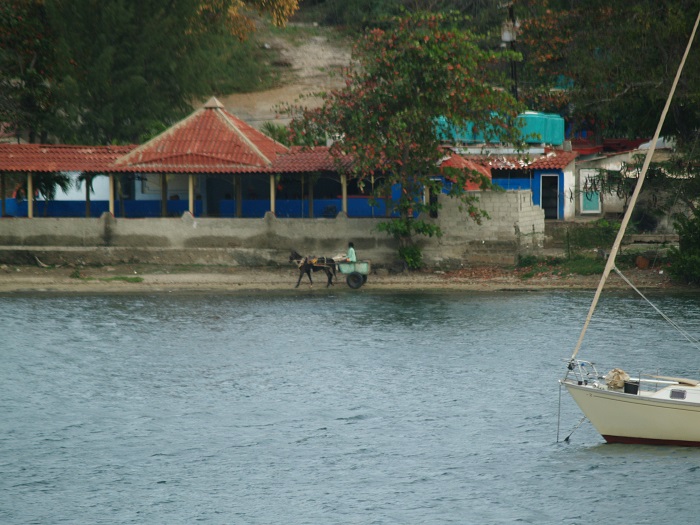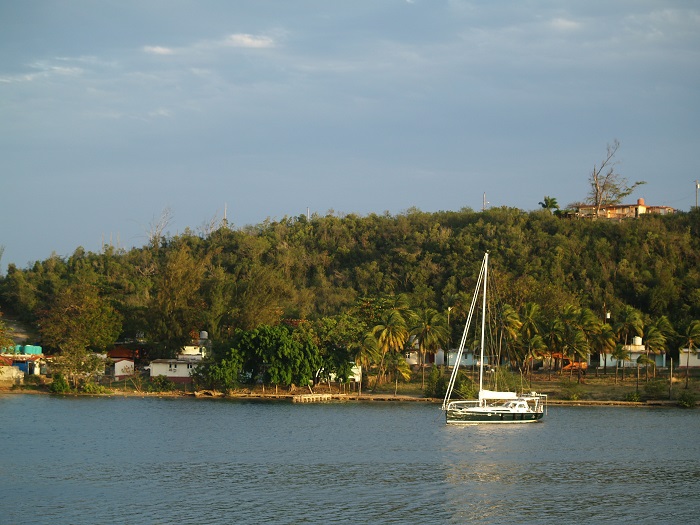In case you’re wondering about the private tour bus even more than the Stones (doubtful, I know), I’ll start with a tale from the latter part of our trip to Havana yesterday. We were standing on a triangle in the middle of a busy intersection in Havana, near midnight, when police sirens heralded a motorcade of SUVs coming through. One of these busy streets had been taken over the by the million spectators who’d been at the concert, so it was very difficult for any vehicles to get through on this street….but a police escort did the trick! We are certain it was the Stones—so no tour bus for them.
The private tour bus in the title actually refers to the bus Bob and I took into Havana for this historic event. If you’re like me you are imagining the standard bus you’d take from anywhere in the US—a huge coach with cushy seating, A/C and tv screens for entertainment to pass the time. Not so in Cuba! (Although, in all fairness, they do have those kinds of buses here for foreign tour companies) Our lovely vehicle was a 1952 Ford armored truck, and there wasn’t much in the ‘cushy’ department. Who knows what engine it now had inside, and how long ago the suspension was replaced. The roads in Cuba are in pretty bad shape so whatever suspension we had in that truck was not up to the task!
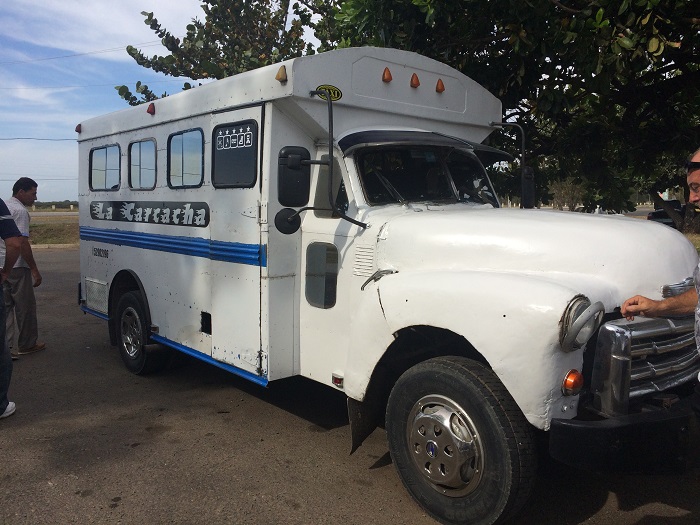
The trip into Havana was a 5-hour affair and the trip home was about 4. That’s 9 hours of hard bouncing, and I am feeling every bit my age this morning as I begin the recovery from that experience! This tour bus had been equipped with relatively new homemade windows (just a reminder that armored have no windows, in case you hadn’t thought about that type of vehicle from a passenger’s point of view), where the reinforced metal sides of the truck had been cut out and some rustic ‘windows’ had been bolted into the holes. Lovely… and there was even air conditioning, although it was quite humid air and not very cool. There was even a tv screen up at the front of the truck, from which the driver entertained us with hours of Cuban music videos. In a country where the Guarda Frontera searches each arriving boat for pornography, I was a bit shocked by what they deem acceptable. But of course, being an American of Protestant background, I have been a bit sheltered in that area. Nine hours of that was more than enough for the foreseeable future.
We were able to sign on to this bus trip through some people in the marina. There is quite a Norwegian contingent here, and through them we learned of a Norwegian expat who has been living in Cuba for a dozen years (he is not a sailor, and lives in an actual house in Cienfuegos). He was looking for passengers to fill his bus (only about 6 – 8 people) and we were the only non-Norwegians onboard. Oh yeah, I forgot about the two Cuban girlfriends….they aren’t Norwegian either! But since their trip was underwritten by their Norwegian escorts I still think of it as a Norwegian endeavor. The cost per person for this excursion—round trip—was 20 Cucs. That’s somewhere in the neighborhood of $23 –Not bad, although the accommodation was about what you’d expect for that price. It was a rare experience that quite made up for the roughness!
We left at 9 am, and arrived in Havana about 2pm. I thought we’d be going straight to the stadium, but our Norwegian host did not think that was necessary. He wanted to have a good lunch and a little rest before joining the crowds. He dimissed the two bus drivers and told them to come back the Hotel Comoradora about 6pm. I thought that would be WAY too late for getting anywhere within sight of the stage. But Pier knows a thing or two after living here so long.
The trip to Havana started with breakfast on the bus, supplied by Piers and Alex. Beers all around at 9am. Breakfast of champions— at least for these adventurous Norwegian and Cuban champions! Bob and I abstained although we suffered some teasing for this. By 11am we were making our 2nd rest stop of the trip…this one at a real snack bar/gas station along the road, as opposed to some of the others stops which involved nothing more than pulling over to a wilderness of cactus and other fauna…the two Cuban women, skipping off lightly into the cactus, in high heels, with their toilet paper in hand. I have mentioned, haven’t I, that it is de riguer to carry toilet paper on your person at all times in Cuba. You certainly won’t find it in many public bathrooms. So the women were already prepared for al fresco rest stops.
Anyway, at our 11 am stop, everyone serendipitously bought big tubes of Pringles in every flavor in stock at the snack shop! It is odd enough that we all chose Pringles since there aren’t many US items in Cuba—but even odder is that there is always a full choice of rum at rest stops and gas stations in Cuba. So, back on the bus/armored truck where Alex jokingly offered a brunch of Pringles with drinks of vodka and some kind of orange soda. I am happy to say I passed on the vodka concoction, but gave in to sharing a tube of Pringles with Bob. He washed it down with a beer. Well, it had to be noon somewhere….
So, I didn’t get a photo of Bob’s brunch, but he did take one of me. Just to be clear, I am holding Bob’s beer so he can take the photo—though I fully admit to taking a couple of sips to wash down those salty chips. (More than a bit embarrassed to share this.)
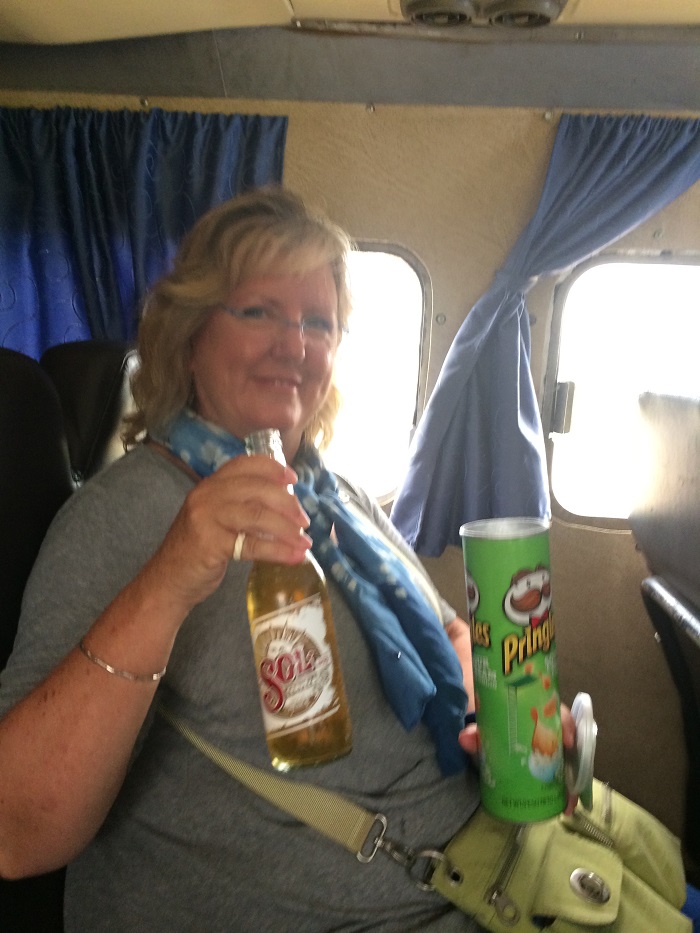
We had 5 rest stops in all on the trip into Havana, and I think that is the main reason it took 5 hours to get there. Driving through Havana was quite an experience–a fast tour of what we’ll see when we come back the by boat in mid-April. We saw everything from Soviet cement apartment buildings that looked like we’d been dropped into Beirut, to 1960s ‘modern’ architecture that never did much for me, and always reminds of the “Jetsons” cartoon. Some of this architecture has remained in remarkably good shape. I wouldn’t know how unusual this might be since most of it in my part of the US is gone—long gone.
Coming into town we went through a circular intersection where two large buildings dominated the view. One of them had a large depiction of Che Guevara on one windowless side, while other featured the same style depiction of Ayatolla Khomeini. We passed this intersection on our return, and they are even more striking at night, being backlit with blue lights.
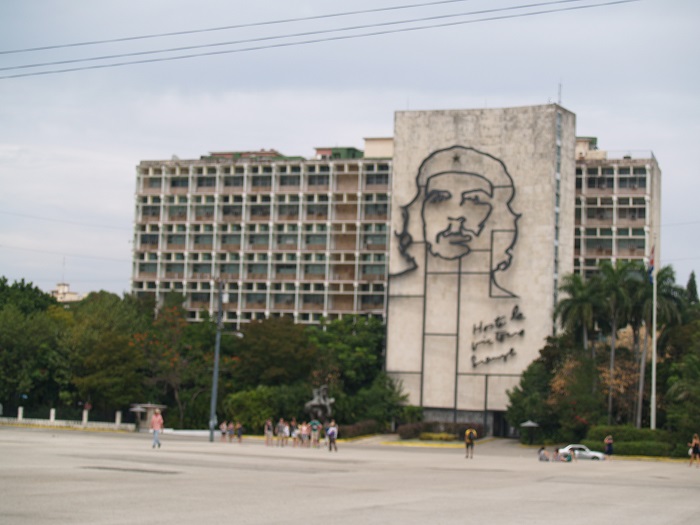
The highlight of our quick tour of Havana was Embassy Row. It was the most well kept part of the city that we saw, and the embassies themselves were a treasure trove of Spanish architectural styles, except (no surprise) the Russian Embassy which is the largest embassy here and done in that iconic Soviet 1960s style. The US embassy is not on Embassy Row, and Pier pointed out how to get there when we return. I’m sure we’ll have to start from scratch though as neither of us is good at remembering details on a day full of so many!
We arrived at the Hotel Comodoro, which caters to a Scandinavian clientele, a mix of 1960s modern block hotel and newer Spanish influenced villa type buildings surrounding a pool and various courtyard gardens. The newer section of the hotel was quite pretty. We had lunch under a covered terrace near the pool. Then Pier recommended we all rest for a bit before we went to the stadium. In fact, Pier and his compatriots needed a bit of time to manage their hangovers. They were all quite under the weather. One of the young Cuban girls was really quite ill. None of them were looking quite as put together as they had at 9am.
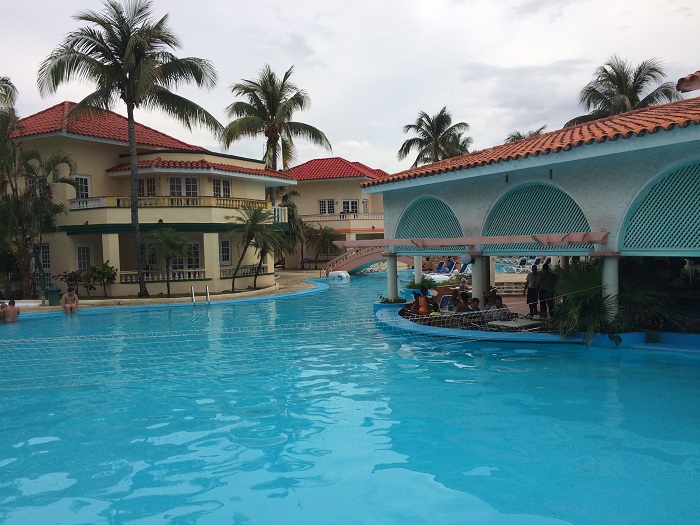
We spent this rest time trying to skype our children…no luck there…and then checking email. We were trying to find the part of the hotel lobby with the best internet speed. We settled on a long side hallway that we had hoped to avoid because it smelled of decades of cigarette smoke and something else a bit old—a vague mustiness which felt like leftover tropical air from the days before air conditioning. It wasn’t until later, when Bob took a walk outside that he found a completely ruined part of the hotel that was just at the end of the lobby hallway where we’d been sitting. On the other side of that hallway was a completely destroyed part of the hotel that must have been ruined in some kind of storm. It had been some kind of ballroom, but now all the windows were gone and the remains of what was inside had been soaked by high tides ever since. With all the upgrades to this hotel it was quite shocking to stumble on this wreckage. It didn’t happen recently.
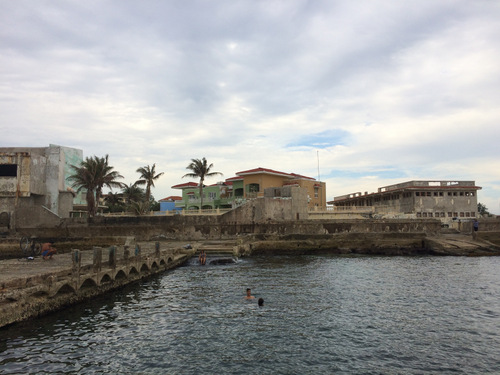
Do you, like me, have a mental image of how people dress to go to an outdoor concert? I think my conception of these events stems back to Woodstock and all that has happened since, and must match most people’s who live anywhere in the US or northern Europe. Since you are going to be outside for longer than you can imagine, without much in the way of creature comforts, most of us think it’s best to be as comfortable as possible. However, I have noticed during our years in the Bahamas and now in Cuba, that some women see this as an opportunity to put forth their best ‘Beyonce’ effort. Our two young Cuban companions were dressed to kill, with high heels to boot, and make up that made them both look absolutely flawless. I think they were both younger than my two sons, which meant that I although I could have been their mother, I would have been a bit out of my prime at the time of their births! Their two Norwegian escorts must have been my age or older. No comment there.
Here is our little entourage waiting on for the concert to start. From left to right: Pier, Dione (accent on that final ‘e’), me, Anna, Alex. Lars had left at this point to join some friends for the weekend.
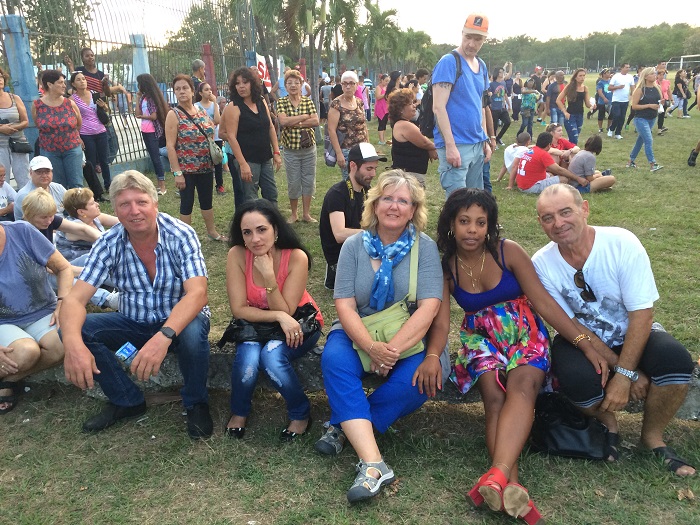
We have had no access to any actual news since leaving the Bahamas, which has been weeks now, so what we have heard about the Stones’ concert is hearsay. We heard that 500,000 people were estimated to come. I figured if you even wanted to see the stage you probably had to arrive at least 24 hours ahead of time. Pier thought arriving about 1 – 1 ½ hours early would be plenty. And he was right. What a shock! There wasn’t any bad traffic when we arrived in Havana, and there still wasn’t at 6.30, when our bus driver delivered us to the stadium. The roads around the stadium were closed to vehicles, but there just weren’t that many vehicles. It was a sea of pedestrians. Now people were saying there were a million people on hand. I wonder when we’ll ever find out what the numbers were.
Our bus let us off right where the roads were closed, so we didn’t even have a long walk to get into the stadium grounds. The stage set up and lights were amazing to me, who hasn’t been to a rock concert in more decades than I’ll admit to here. And back in that distant era they were held indoors and had a finite number of seats available.
We were so much closer to the stage than I would ever have dreamed, so it was quite exciting for me….not that we were close enough to see Mick Jagger’s facial features. But he was about ½” tall, as were the others, and I could clearly tell them apart and watch them move about the stage. I never expected that, given that we didn’t arrive until almost 7pm for an 8pm concert! The video screens were impressive too, and it was great to watch the real performers while also seeing the details on the big screens.
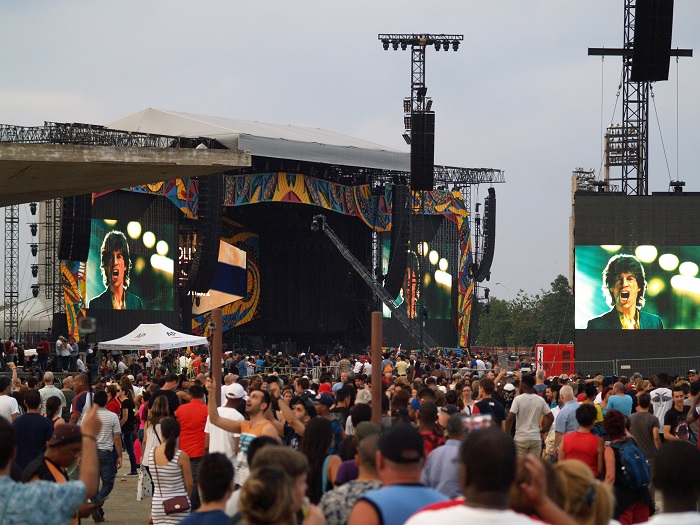
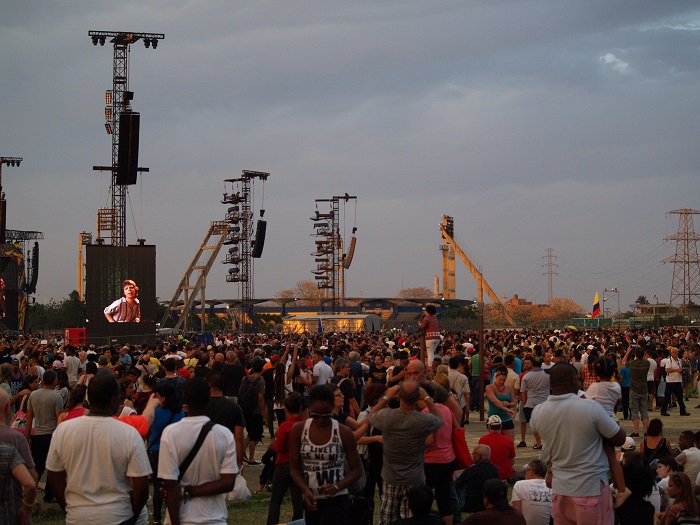
Many people were organizing themselves by nationality by putting up flags. I saw a large American flag at one point, moving through the crowd at stage center, but it then disappeared somewhere else. We were not planning on leaving our bus group since we didn’t want to miss our ride home, so I don’t know how big that group was. I’m sure someone made an attempt to estimate the number of US attendees. Near us was a big Norwegian contingent, and right at the stage was what might have been the biggest foreign group from –the UK, flying a giant Union Jack.
People were climbing poles to get a better view of the stage, and this young man was particularly fun to watch.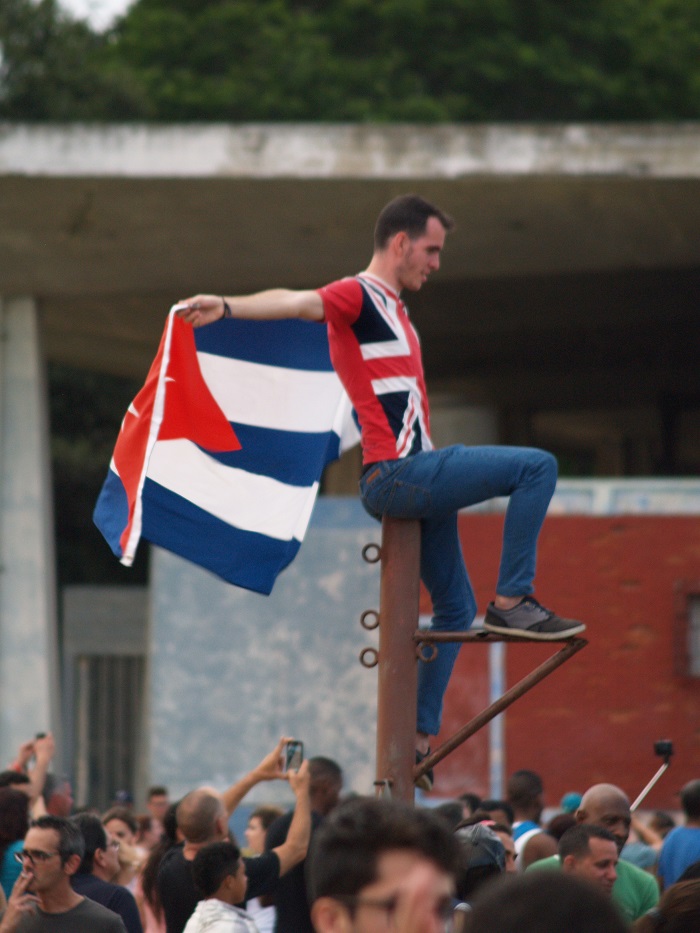
And finally there was the concert itself! I loved it…. They opened with “Jumping Jack Flash”—Mick Jagger still skips all over the stage and still appears to have the energy that he had when he was 20-something. Keith Richards can still squat all the way done on his elderly knees, and actually did it several times in a row (to outrageous cheers) just to show that he could. Surely he had cortisone injections recently and then took a little something to numb the pain before the concert. Whatever…it was still amazing! I wonder if they feel as worn out this morning as I do?

I’m sure there are videos all over the internet as I write this, and they’ll do more than any words I can write. It was great to be there, and I can’t wait to see footage of the concert too–although I might not get to do that until I return to the US. I’m so glad we went, even in spite of the challenge of finding our armored truck afterward, which took 2 hours. We got back to Cienfuegos around 3.30, and back onboard at 4am. Neptune smiled down on me by returning me to a calm harbor for that early morning dinghy ride back to Pandora.

